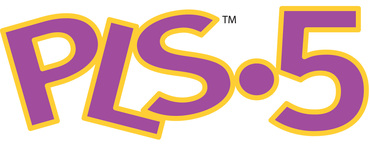The Preschool Language Scale - Fifth Edition (PLS-5 UK) offers you a comprehensive developmental language assessment, with items that range from pre-verbal, interaction-based skills to emerging language and early literacy. 
Preschool Language Scale - Fifth Edition
PLS-5 UK
The Preschool Language Scale - Fifth Edition (PLS-5 UK) offers you a comprehensive developmental language assessment, with items that range from pre-verbal, interaction-based skills to emerging language and early literacy.‹ View all tests and materials
PLS-5 UK Basic Kit
9780749168681
Qualification Level
B
Includes Examiner's Manual, Picture Manual, Admin Manual, Record Forms (25) and Home Communication Questionnaire. NB This is the upgrade Kit for those who previously purchased PLS-4 and already have the manips set. Please note you will also need to purchase the PLS-5 manips set below, or source your own items. See FAQs.
£482.00